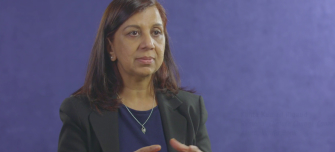ESA’s Global Development Assistance (GDA) is preparing for HYDROSPACE 2023, set to occur in Lisbon from November 27th to December 1st, 2023. This event, organised by the European Space Agency (ESA) in collaboration with the Global Energy and Water Exchanges project (GEWEX) and the Centre National d’Études Spatiales (CNES), builds on previous workshops, focusing on Earth Observation (EO) technology and its hydrology applications. During the opening, GMV, which leads ESA’s GDA Climate Resilience consortium, will deliver a keynote on ‘Enabling Climate-Resilient Flood Management in South Sudan through Earth Observation Data.’ The keynote elaborates on the successful collaborative efforts with the World Bank, a core institutional partner to ESA’s GDA programme, which have focused to bolster flood resilience by analysing hazards and trends and enhancing preparedness and water resource management in South Sudan’s river basins.

In 2022, South Sudan was ranked the world’s most vulnerable country to climate change, compounded by political fragility. It faces challenges like riverine and pluvial flooding. Since 2017, severe and persistent floods have been an annual occurrence in South Sudan, leaving certain areas waterlogged from one flood season to the next. Indeed, the historical floods of 2019 and 2020 were further surpassed by record floods in 2021, which affected between 800,000 to 1.2 million people and displaced more than 300,000. The World Bank partners with South Sudan’s government and the Ministry of Water Resources and Irrigation for the “South Sudan Climate Resilient Flood Management” project, assessing flood risk and priority investment areas.
In collaboration with the World Bank, ESA’s GDA Climate Resilience consortium utilises Copernicus Sentinel-1 SAR and Visible Infrared Imaging Radiometer Suite (VIIRS) imagery to monitor floods in South Sudan, identifying prone areas, and generating flood hazard maps. These EO-based maps provide information on recent flooding seasons (2017-2022), raising awareness and aiding flood risk management. Combining EO derived flood hazard maps with population and assets exposure data GMV has helped prioritise investments and develop flood risk management plans across South Sudan. ESA’s GDA Climate Resilience consortium has demonstrated how Earth Observation expertise is key for climate and environmental monitoring.
Hydrospace 2023 is designed to be inclusive, welcoming EO scientists, water researchers, students, modelers, climate scientists, industry professionals, policy makers, and community representatives. This diversity of participants ensures a holistic approach to water cycle science. The conference proceedings will be published by ESA after the conference.
















